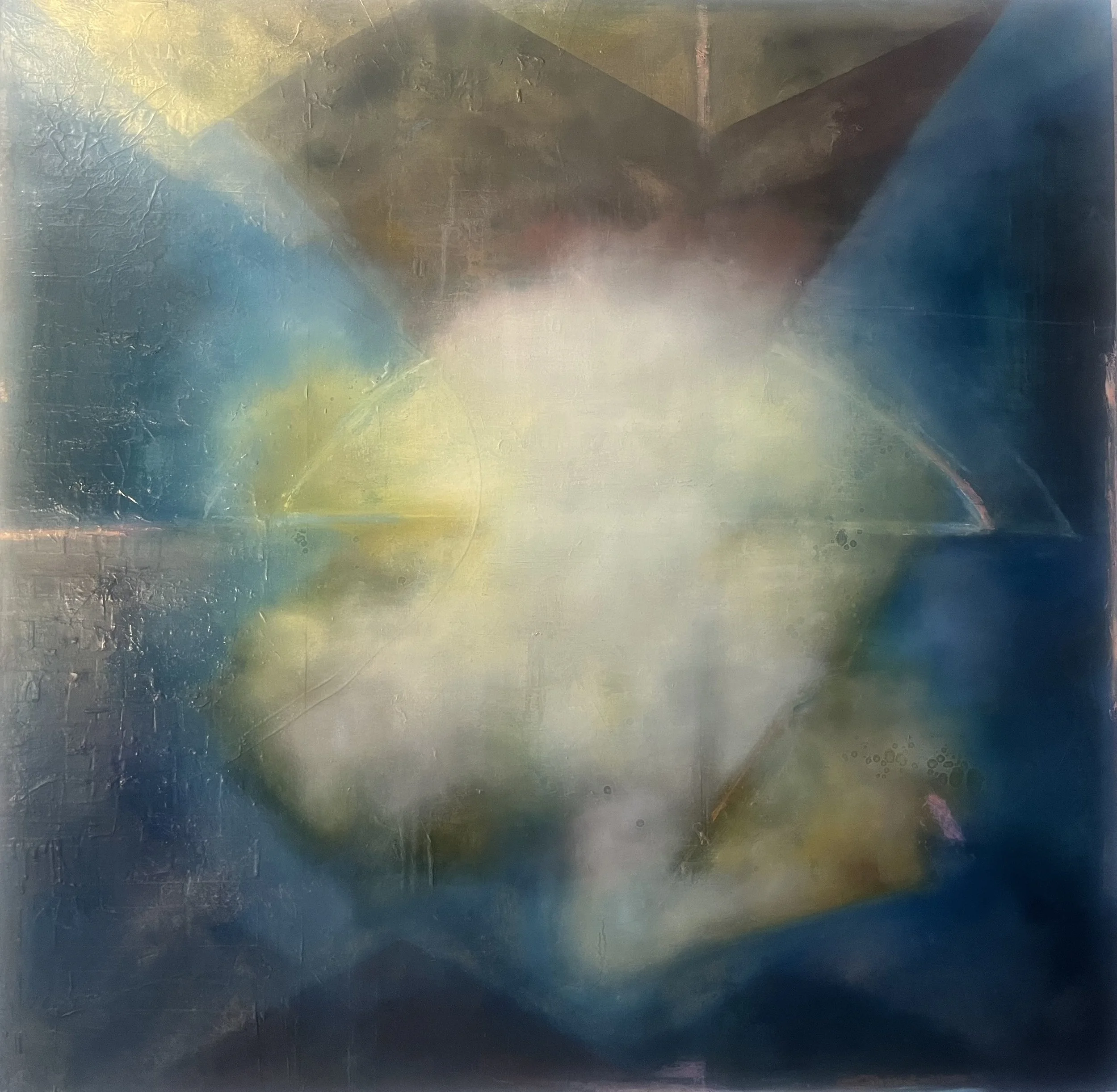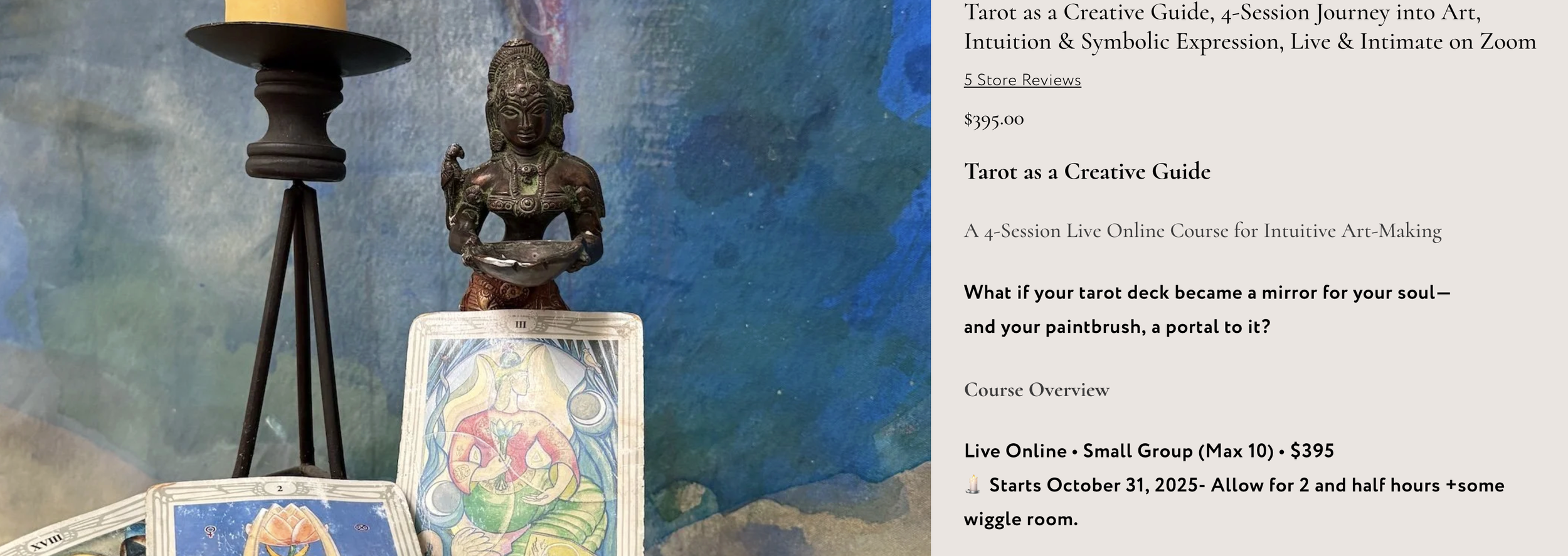The Weave of the Soul
Lauren Mantecon,
The Weave of the Soul
“Regardless of how we get there, no matter what is broken or lost, it’s the weave that binds us. We call its pattern beauty.”
— Mark Nepo
As an artist and mentor, I move through the world listening for signs and symbols—subtle and bold—that speak directly to my soul and call forth new bodies of work.
Painting, for me, is more than technique. It is a vessel, a path, a devotion to the sacred work of witnessing and expressing the depths of being.
My love of symbols has carried me to sacred sites:the standing stones of Scotland, the carved hieroglyphs of Egypt, and the pyramids of Mexico and the Yucatán, aligned precisely to the sun and stars. Across continents and millennia, humans have raised monuments in dialogue with the heavens, honoring the axiom: as above, so below.
A Lineage Written in the Stars
Among these languages of stone and sky, Tarot and Astrology speak most clearly to me—not as fortune-telling novelties, but as rigorous metaphysical languages and repositories of ancestral knowledge.
Astrology, a practice as old as recorded time, observes the movements of the Sun, Moon, and planets as mirrors of human experience.
Although the precise history of tarot remains elusive, historians have speculated on its origins, offering many theories that point to its earliest archetypes and symbolic roots. Evidence suggests that the 22 cards of the Major Arcana echo Egyptian stages of initiation, carrying archetypal imagery of birth, death, and cosmic renewal.
******Figures like the Egyptian sky goddess Nut who in astrology represents the sign Aquarius (the water bearer) and in the Tarot as Major Arcana numer 17, The Star. In Egyptian symbolism she is seen as a women arched over the world, forming a protective vault to the heavens.
Nut, personification of the night-sky, speckled with stars, from inside the coffin of Peftjauneith.
.
And the goddess, Isis, High Priestess of the Mysteries, ruled by the Major Arcana of the moon in Tarot, number 18 and in astrology the sign of Cancer, all forming a symbolic language of image and intuition.
Much later,in 14th-century Northern Italy, artists expanded the tarot deck into the 78-card form we know today, adding the Minor Arcana: four suits reflecting the elements—fire, water, air, and earth—and the cycles of everyday life. By the late 15th century, these symbolic cards had begun circulating in Europe as playing cards, gradually evolving into the full deck structure we recognize today.
Image Before Concept
Tarot seems to emerge from the deepest layers of human experience—delivering images first, before concepts or opinions.
It raises the age-old question: which comes first, the concept or the image?
To speak in images is like walking into an art gallery without labels. The imagination is stirred before explanation.Tarot asks of us to dig deep into the depth of self and experience our own amplicfication of understanding.
The true Tarot is symbolism; it speaks no other language. In Jungian terms, it functions archetypally, mapping the mystery of consciousness and its relationship with the unconscious. Tarot invites us to let go of logic—dropping from our heads to our hearts—to imagine a language through our feeling centers. It is a practice of telling personal and universal stories through pictures.I have found it over the decades to be a dedicated partner to my painting practice - as both support and inspiration.
Each card is a hook for the imagination, a map, a projection holder. Like dreams, the meaning of tarot comes from a level beyond ordinary consciousness. Our personal associations may limit understanding, but connecting the dots through analogy—with myths, fairy tales, paintings, or history—reveals a more universal picture. It reminds us we are not alone, and that clusters of feelings and intuitions can be a bridge guiding us forward.
🜂 Temperance & the Artist’s Work
One of my favorite images in the tarot is Temperance,card number 14 in the Major Arcana. In the Aleister Crowley deck, painted by Lady Frieda Harris published in the 1940’s and illustrated by it is called Art, representing the experience of transforming one thing into another.
In the Rider- Waite deck ( published in 1909) and painted by Pamela Coleman Smith. The card depicts a winged angel with one foot in water and the other on dry land, pouring water between two cups in a diagonal flow. It is a quiet teacher, reminding us that what feels divided can merge and transform at any time.
This is the work of the artist alchemy—blending opposites until something entirely new is born.
As creatives, we are called to open portals, practicing discernment and surrender simultaneously. It is a constant weave that asks for our full attention and discipline, to recognize the symbols and signs all around us.
Thanks for reading,
Lauren
Join the Journey: Tarot as a Creative Guide
If the ideas of balance, discernment, and creative exploration through painting resonates with you, I invite you to join Andrea Cassola of FriendlyTarot.com and myself for Tarot as a Creative Guide, 4-Session Journey into Art, Intuition & Symbolic Expression, Live & Intimate on Zoom -
link Here for more information. Yes- we will be painting!



